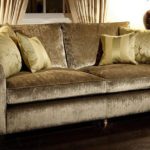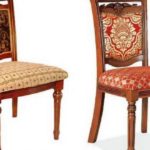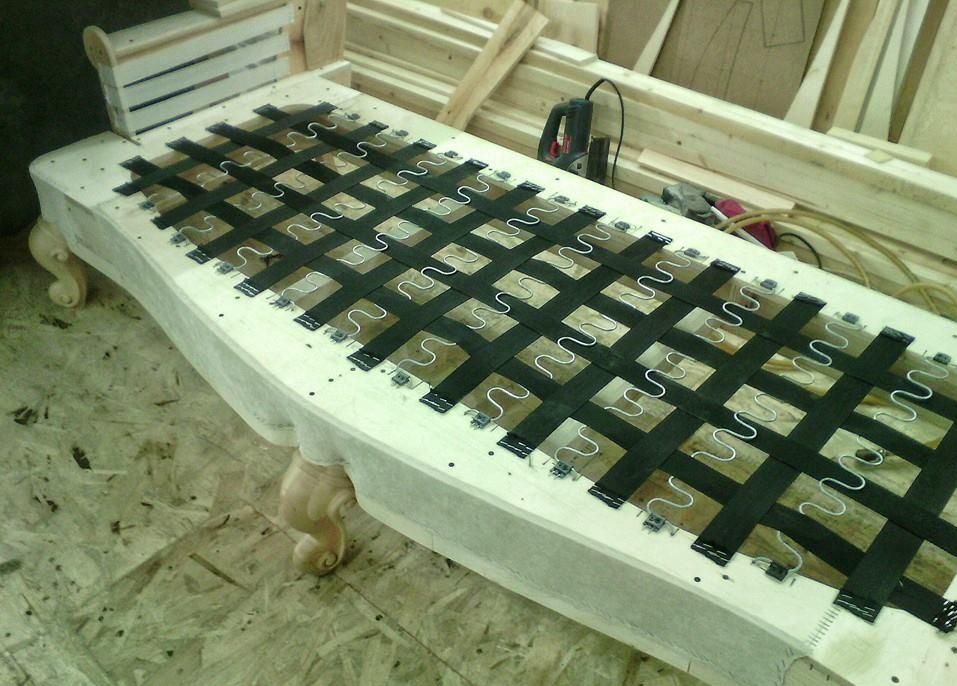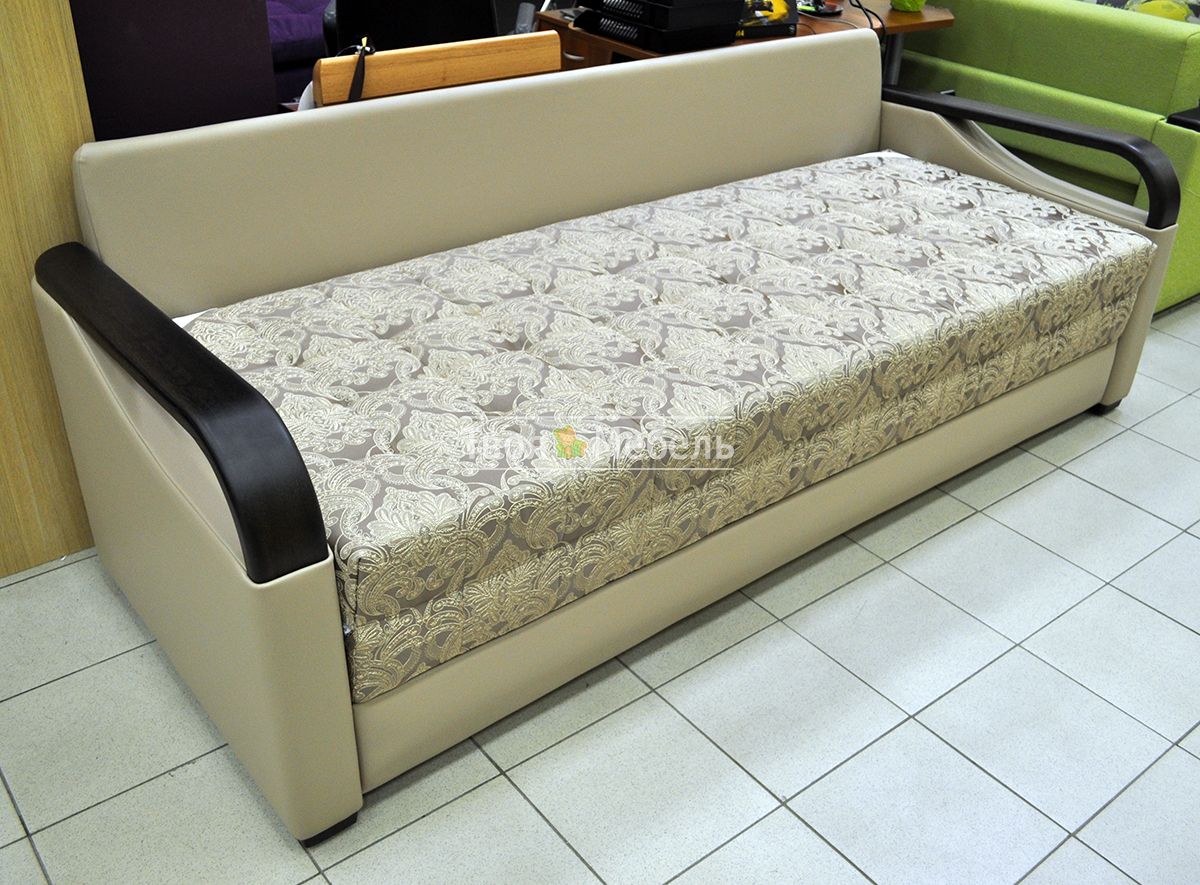Which fabric is best for upholstering a sofa?
Today, when choosing sofas, it is possible to take into account not only the size of the product, functionality and build quality, but also the quality of the fabrics and upholstery material covering the thing. Depending on the purpose of the sofa and its place in the interior of the apartment, we choose the optimal type of fabric.
The content of the article
Upholstery types: great variety
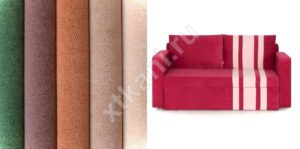 Modern technologies make it possible to create a large number of aesthetically attractive, wear-resistant options. How to navigate among the multitude types and choose yours?
Modern technologies make it possible to create a large number of aesthetically attractive, wear-resistant options. How to navigate among the multitude types and choose yours?
Skin and her "relatives"
Leather upholstery is a fairly old invention. Luxurious-looking, matte-shine leather sofas are invariably associated with classic interiors. The advantages of leather are well known:
- reliability and durability (will last for years);
- respectable “appearance”;
- easy to clean (just wipe with a damp cloth or sponge and the item will “shine” like new).
But there are also disadvantages:
- if the leather is of low quality, it will very quickly affect its appearance: it will wear out and develop unsightly cracks;
- the range of colors of manufactured products is not wide, and the color of the item may not fit into the style and color scheme of your interior;
- high cost, not practical.
Artificial leather (imitation leather) looks almost no different fromt real, is sold in a huge number of options and has its advantages. This:
- Wear resistance comparable to natural leather, more practical than real leather;
- moisture resistance;
- non-absorption of odors and dirt (this is why leatherette is often used in public spaces);
- with high quality it also looks expensive and respectable;
- pleasant to the touch.
Minuses:
- if the quality is questionable, it may crack;
- usually plain;
- susceptible to fading as a result of exposure to ultraviolet radiation;
- combustible.
IMPORTANT. IzdelIyu, upholstered leatherette, there is nothing to do near fireplaces and heating devices with an open spiral - there is a fire hazard!
Eco leather similar in characteristics to natural, but created using a porous polymer applied to a cotton base. Its advantages:
- wear-resistant;
- "breathes" — allows air to pass through;
- has high environmental qualities.
Arpatek is a type of leatherette often used to decorate car interiors. Also similar to the “original”:
- lasts a long time;
- easy to clean - dirt can be removed with a simple soap solution, It is advisable to purchase special products for caring for the leather interior of a car;
- It feels less slippery and seems “warmer”.
The disadvantages are the same as those of leatherette, and the main one is that it can crack.
IMPORTANT. Do not use compounds containing chlorine to clean Arpatek, and do not get carried away with cleaners containing alcohol. A categorical “no” to acetone and bleaches!
Luxurious triad: tapestry, jacquard, chenille
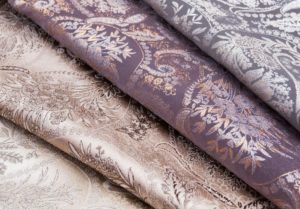 These materials, due to their high cost and “pretentious” appearance, are preferred by people who want to make a certain impression on friends and guests.
These materials, due to their high cost and “pretentious” appearance, are preferred by people who want to make a certain impression on friends and guests.
The tapestry is distinguished by a variety of colors and a wide range of patterns and ornaments. This is a plastic fabric suitable for furniture of any, even the most intricate shape.
Advantages of the tapestry:
- uhelegance and style, suitable for creating original interior solutions;
- good resistance to deformation;
- environmentally friendlyb;
- easy to care for - stains simply wash off, stubborn stains are removed with detergents (but not acidic or alkaline!), dry cleaning is possible.
Flaws:
- there is no need to test the strength with too frequent heavy loads;
- you should not be overzealous with “wet” cleaning;
- a product upholstered with tapestry should be protected from exposure to ultraviolet radiation.
IMPORTANT. The lower the content of cotton components in the fabric (it can be from 40% to 100) - the longer it will last. But if you or your loved ones suffer from allergies, you should choose a material with a maximum of natural fibers.
Jacquard is a “complex” fabric, it is based on a complex interweaving of high-strength fibers, but the excellent result is obvious: a variety of designs, a richness of shades. Advantages of jacquard:
- luxurious appearance;
- sophistication;
- excellent wear resistance.
But “beauty requires sacrifice.” Minuses:
- furniture covered with jacquard is more decorative than practical - it is not very pleasant to sleep on: jacquard is hard, “scratchy”, cold;
- no wet or intensive cleaning - only dry, otherwise the canvas will lose color and presentability.
Chenille resembles a tapestry, but is created using a slightly different technology. It is sophisticated, attractive, but not too varied in terms of color shades. In terms of its advantages, it is again close to a tapestry:
- looks respectable;
- does not deform;
- is wear resistant;
- environmentally friendly;
- Dust can be removed using a regular vacuum cleaner.
Flaws:
- if chenille is created not on a fabric, but on a glued base, it must be protected from moisture, it absorbs easily, but takes a long time to dry, and dampness does not have the best effect on its appearance;
- may also suffer from the claws of your pets - threads are pulled out.
Scotchgard and thermojacquard
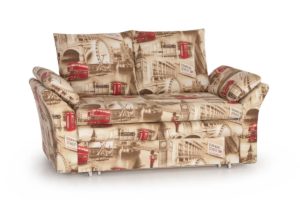 These are optimized versions of jacquard, more resistant to wear and stains. Scotchgard is impregnated with a transparent protective composition; thermojacquard is produced by applying an ornament to a base under the influence of high temperatures. These types of jacquard are designed for intensive use:
These are optimized versions of jacquard, more resistant to wear and stains. Scotchgard is impregnated with a transparent protective composition; thermojacquard is produced by applying an ornament to a base under the influence of high temperatures. These types of jacquard are designed for intensive use:
- they have a long service life;
- they are less polluted;
- they can be washed carefully with soap and gentlyoh with a rag, water with a temperature of no more than +40°C, then dry clean using a vacuum cleaner.
IMPORTANT. Not use for cleaning abrasives, solvents and bleaches. Any aggressive solvent can damage the fabric.
Flock And courtesan
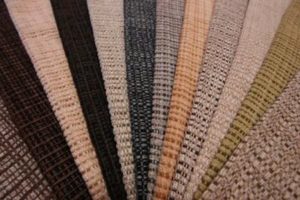 Flok, invery similar on velvet is extremely popularno wonder: he softOK, niceen, produced in a wide range of colors and shades. It has many advantages:
Flok, invery similar on velvet is extremely popularno wonder: he softOK, niceen, produced in a wide range of colors and shades. It has many advantages:
- not prone to deformation;
- retains the color and brightness of shades for a long time;
- resistant to rough influences (it is difficult to tear and pierce, it is not afraid of untrimmed claws of pets);
- moisture resistance and, therefore, ease of care - it is easy to wash;
- environmentally friendly and hypoallergenic;
- does not fade from the sun.
There are also disadvantages:
- subject to rapid abrasion - with active use it will soon require replacement;
- absorbs odors perfectly.
Courtesan, or Teflon flock, is a very recent invention, an improved version of flock. The fabric fibers are protected with Teflon - and it:
- has increased resistance to mechanical damage;
- antistatic;
- resistant to high temperatures;
- water-repellent.
Stains - even from ink and coffee - come off easily from the courtesan; you can wash it with a sponge and soapy water, or clean it with a vacuum cleaner.
Velor and eco-velor
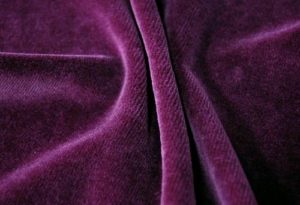
Velor - cozyth, very handsometh, diverseth By color decisions and pleasantth to the touch, besides natural in composition - cottonovo-wool. Undoubted advantages:
- environmental friendliness;
- strength - velor does not deform;
- high thermal conductivity;
- excellent ventilation (“breathes”);
- softness.
But there are also undoubted disadvantages:
- wipes quickly;
- requires caution - strong stains are easily absorbed and cannot be removed on your own;
- absorbs odors
Ecovelor is an improved version of its “big brother”. It is stronger and wears less, does not stretch or sag, has a water-repellent impregnation, and does not fade.
“Washing” can be done at a temperature not exceeding 30°C, clean with a dry soft brush.
IMPORTANT. We do not clean ecovelor with aggressive chemicals!
Cotton
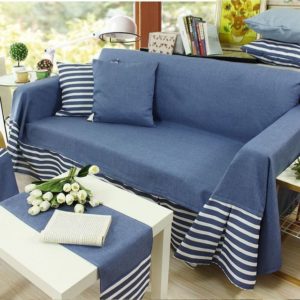 Simple, natural origin upholstery fabric, often with a protective impregnation that prevents paint abrasion and extends service life. Pros:
Simple, natural origin upholstery fabric, often with a protective impregnation that prevents paint abrasion and extends service life. Pros:
- environmental friendliness;
- excellent ventilation.
The only downside is its short service life.
Boucle
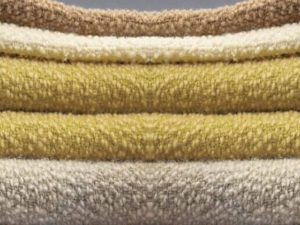 A lovely “lamb” material with a surface consisting of small dense nodules. Advantages:
A lovely “lamb” material with a surface consisting of small dense nodules. Advantages:
- cozy view;
- increased “decorativeness”;
- low price.
Flaws:
- susceptibility to damage - any sharp object will leave a puff on the surface;
- easy contamination due to porosity;
- Difficulty in cleaning - stains cannot be scrubbed off so as not to damage the upholstery, only try to remove them with soapy water and a soft sponge. It is possible that it will not succeed.
Can vacuum cleanerwash and wash And non-aggressive detergentsby our means. No dry cleaning!
Microfiber
Made mostly from polyester and cotton combinations. Advantages:
- hygroscopic - resists dirt, moisture and odors well;
- resistant to abrasion, tear resistant;
- excellently ventilated;
- “calmly” relates to the bright sun - it will not fade, will not fade;
- hypoallergenic.
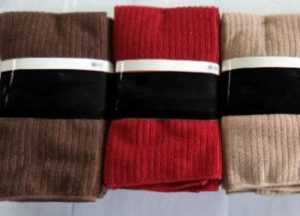 One of the varieties of microfiber is “microvelor” called forest.
One of the varieties of microfiber is “microvelor” called forest.
The disadvantage is that it is not easy to care for: special compositions for washing, only natural, “air” drying. It is permissible to vacuum and carry out careful wet cleaning.
Baking soda can be used to remove stains. Fat can be removed with a detergent; it is possible to use alcohol solutions or vodka.
IMPORTANT. Solvents must not be used! Also, do not iron microfiber with an iron.
Choosing upholstery for different categories of rooms
The key to good preservation of upholstered furniture is its selection taking into account the characteristics of the room. It is clear that each room in the house has its own purpose, and sofas will experience different loads and impacts. So which fabric is most suitable?
IN living room
For the living room It is worth choosing upholstery material based on the lifestyle of the owners: if you spend relatively little time there and you hardly have guests, the following will be suitable:
- jacquard;
- tapestry;
- velours;
- boucle;
- wenill.
If the living room is used for its intended purpose - to receive numerous relatives, friends, colleagues, and the sofa will be actively used, your choice is:
- leather or any of its “relatives”;
- thermojacquard;
- scotchguard;
- flock
To the nursery
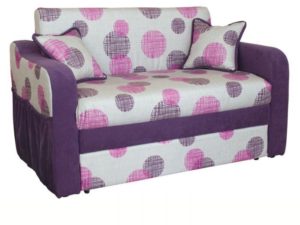 The choice for a children's room depends on the age and gender of the child. For kids, regardless of gender, a soft surface that is not afraid of damage and dirt is better: flock and chenille are very good. If you plan to reupholster furniture in the future, cotton will do.
The choice for a children's room depends on the age and gender of the child. For kids, regardless of gender, a soft surface that is not afraid of damage and dirt is better: flock and chenille are very good. If you plan to reupholster furniture in the future, cotton will do.
For neat girls, velor, eco-velor, bouclé, and microfiber are suitable.
For active and rambunctious boys, the best option is faux leather.
To the kitchen
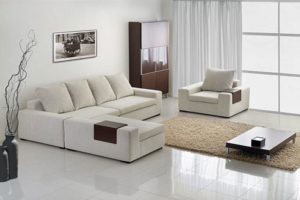 The upholstery of a kitchen sofa should not absorb odors; why do you need a piece of furniture that smells of several (individually quite aromatic) dishes at once - and not be afraid of contamination (even if you are careful and well-coordinated - anything can happen in the kitchen, splashes from cooking products and gas deposits are inevitable ).
The upholstery of a kitchen sofa should not absorb odors; why do you need a piece of furniture that smells of several (individually quite aromatic) dishes at once - and not be afraid of contamination (even if you are careful and well-coordinated - anything can happen in the kitchen, splashes from cooking products and gas deposits are inevitable ).
Which upholstery to choose for the kitchen? We can safely recommend artificial leather and courtesan.
Fabric stores can often offer a chart or book with information about fabrics. But the disadvantages of the type of fabric are rare there.

